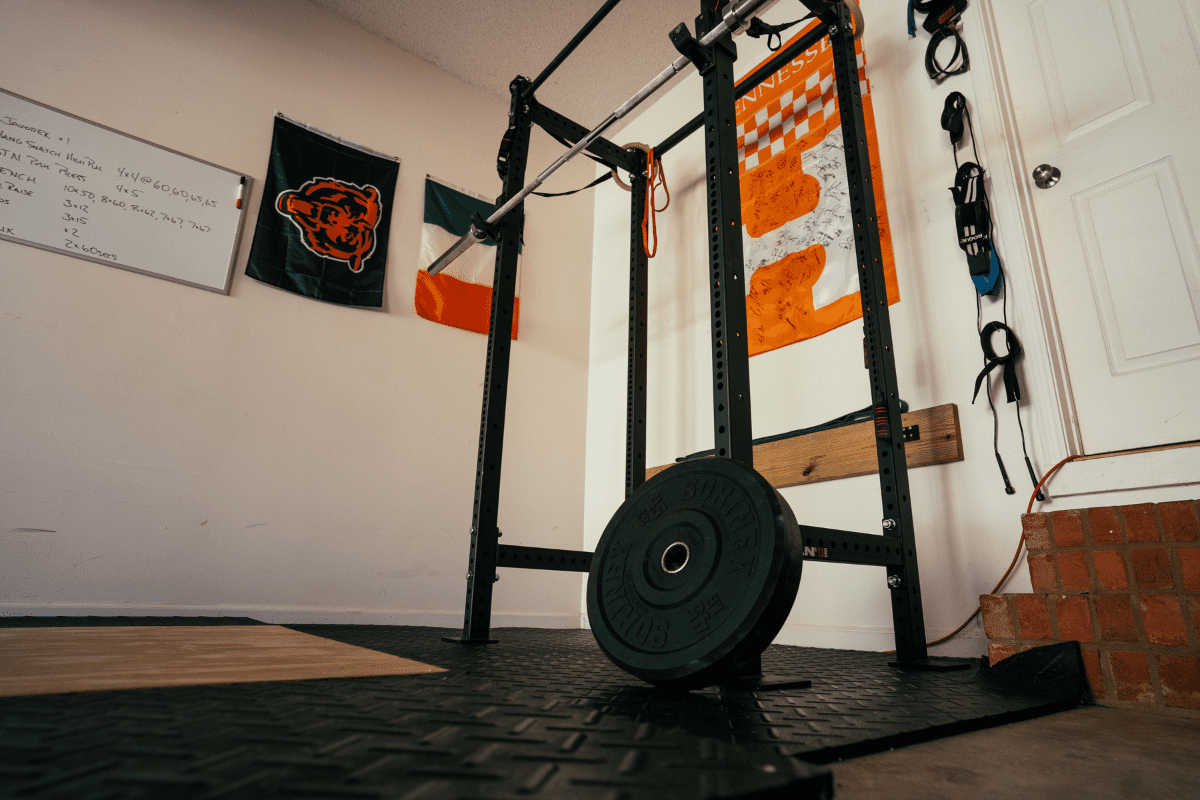4 Ways To Anchor A Squat Rack (Without Bolting it Down!)
Having a squat rack that wants to tip off the ground when you’re racking weights or doing pull-ups can be extremely annoying and frustrating (not to mention dangerous). However, bolting the rack into the floor just isn’t an option for many of us.
So, how can you anchor a squat rack without bolting it down to the floor?
To anchor down a squat rack, you need a way to offset the weight and force that you’re applying to one side of the rack. There are multiple ways this can be done by using weight plates, kettlebells and even bungee hooks.
In this article, I’m going to give you 5 different ways (and some bonus tips) you can anchor down your squat rack without having to drill holes into a concrete floor.
How To Anchor a Squat Rack
1. Load a Barbell On The Rack
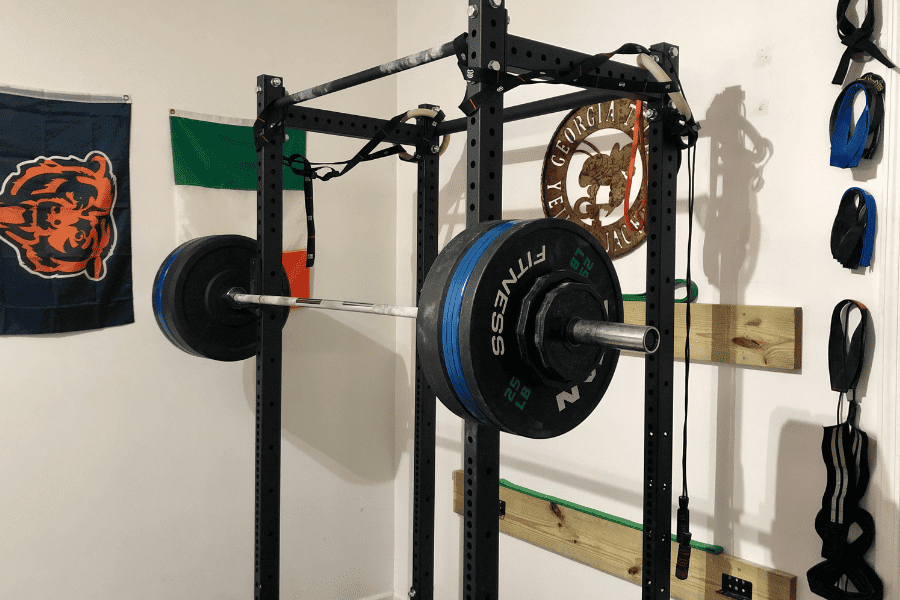
The simplest solution to anchor down your rack is to place a barbell on it and load it down. This works best if you have an extra bar so you can use one bar to anchor the rack and still have the second bar available if you want to superset an exercise with your pull-ups.
How much weight you need on the bar to secure the rack depends on you. I’m 240 with a pretty healthy kip on my pull-ups and about 275 holds my rack down pretty well.
2. Get Weight Plate Holders
This is by far the easiest and most effective way to anchor down a squat rack. In fact, I’ve worked in many college weight rooms where this is essentially we always anchored down our squat racks.
Weight Plate Holders are essentially pegs that attach to your rack and allow for the storage of weight plates. A couple of 45s on a low peg of a squat rack will hold down almost any rack from doing a lot of moving around.
Obviously, the more weight you’re able to add the more effective this option becomes.
The only downside, and it’s not much of one really, is that weight plate holders are going to cost you a few bucks. For my rack, I could have gotten 4 weight plate holders for $60 total. I opted not to get them, not so much for the money, they just didn’t make sense for my space.
If you already have your rack (and don’t have plate holders) you can most likely purchase an extra set through the same manufacturer that you bought your rack.
If that’s not an option make sure the diameter of the holders matches the diameter of the holes in your rack. Most likely it will be either 5/8″ or 1″, but if they are the wrong size they will not work.
Read More:
3. Stack Plates On the Base
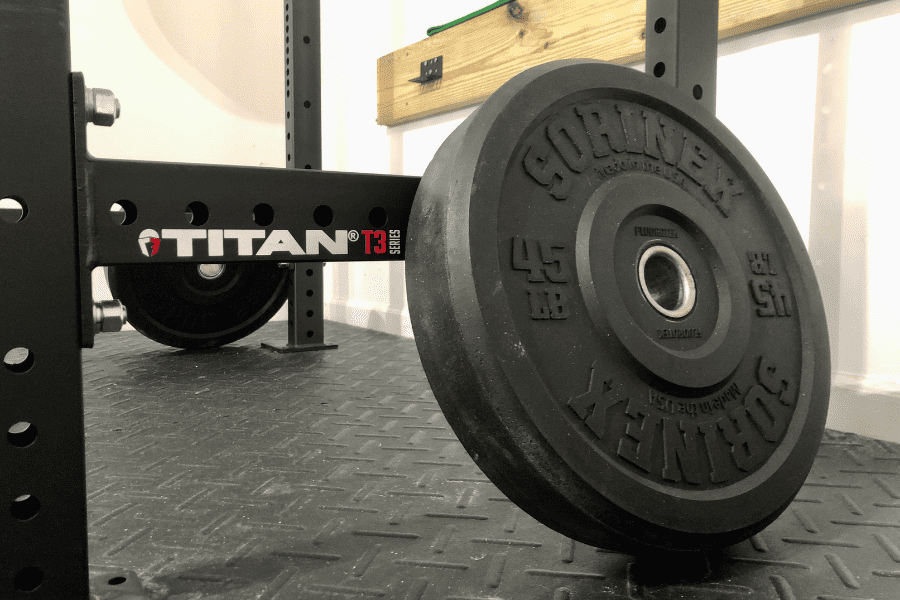
Stacking plates on the base or “feet” of the rack, or simply leaning a stack of plates against the rack can also help anchor down a rack. In no way is this going to be as effective as having actual weight plate holders, but it will help.
If you’re a lighter person doing pull-ups or just want a little extra stability when you rack your bar, stacking plates on the rack itself can do the trick.
However, if you’re a heavier person (like me) trying to do pull-ups then just leaning some plates against the rack will most likely not be enough to get the job done. You’ll have to try one of these other options. (Or a combination of 2)
4. Hang Weight From the Back
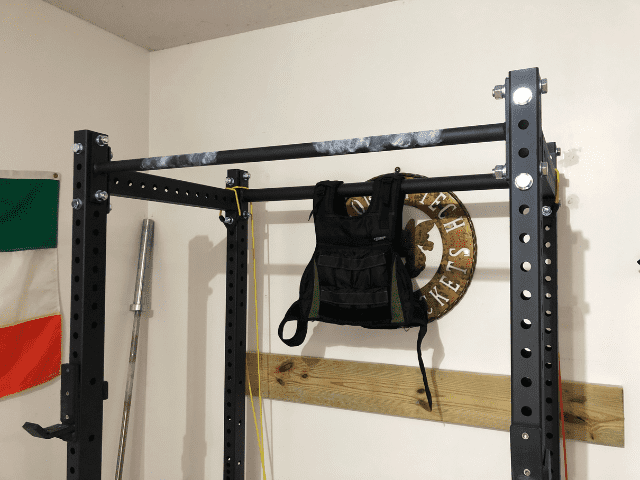
This option can work great if you have pull-up bars in the front and back of your rack. You can use jump stretch bands to hang a plate or kettlebell from the back pull-up bar while you do pull-ups on the front bar.
I typically like to hang my weight vest off the back bar. It works great to dry out my vest after a workout as well as helping to keep my rack anchored down. It’s a cool look too in my opinion which never hurts.
If you are going to hang a weight from the back of the rack, just make sure it doesn’t start swinging from momentum. Otherwise, you may end up getting hit or putting a hole in the wall.
5. Get Creative
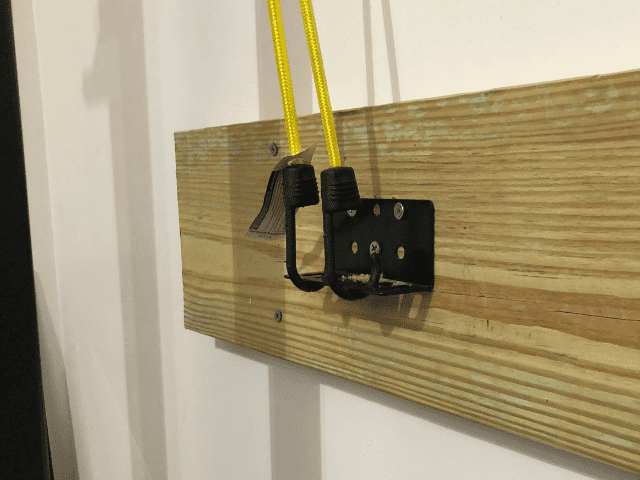
All of the above options can be effective in anchoring your rack down without having to bolt the rack into the floor.
I’ve tried all of them to different levels of success, but here is the solution that I now use.
I still have a 2×12 drilled into the wall that I had used to attach my DIY Squat Rack to the wall. So, I drilled a hook into the board and lined up with my back two uprights.
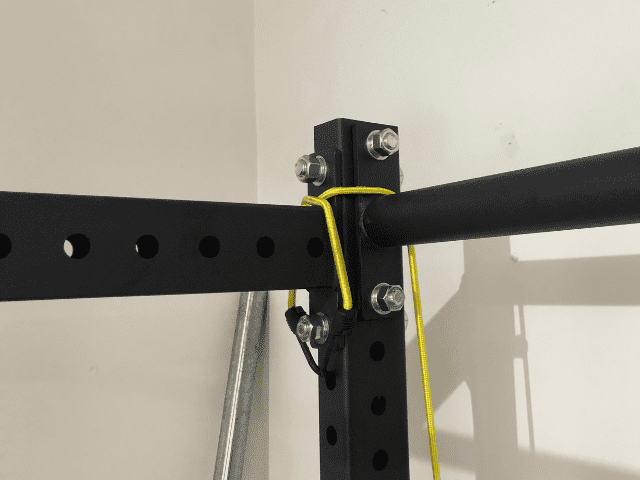
Then, I used a few bungee hooks that I had lying around to attach to the hook and then into a hole in the top of the rack.
This has worked amazingly well. I get no tipping or wobbling even when I do pull-ups at 245 pounds on my tall and narrow rack. It also doesn’t seem to be putting any kind of stress on the board or wall.

Get Shredded… For Free
Get a free workout Monday through Friday, posted right here on Horton Barbell. These workouts are designed to help you get strong, in shape and look great at the beach!
Bonus Tip
If you’re already thinking about this before buying your rack, then kudos to you, you are a planner!
If you’re worried about how much your rack may tip or wobble then look into buying a rack that’s deeper (distance from the front uprights to the back uprights) and maybe even shorter. This is just simple engineering. The taller and narrower your rack is the more prone it will be to tipping.
Buying a squat rack that is wider is going to naturally be more stable, but you may have to give up more space within your gym.
The heavier your rack is the better as well, at least when it comes to stability. Look for a 3 x 3 rack with 11 gauge steel.
Finally, if you’re okay with putting holes in your wall, then take a look at some wall-mounted racks.
These racks forego the back two uprights and instead anchor directly into your wall. These are huge space savers and can be very stable. You just have to decide if you’re comfortable with anchoring a squat rack into your wall.
If you are, I covered a few good wall-mounted racks when I was researching the best squat racks under $500.
Final Thoughts On Anchoring a Rack
You don’t need to drill into your garage floor to keep your squat rack from tipping or wobbling while you’re working out.
Try some of the solutions above, use a combination of two or three of them if need be, or try to get creative and DIY your own solution.
If you’re still concerned about the stability of your rack for pull-ups then you may want to consider installing a wall-mounted pull-up bar. They’re rather cheap and easy to install and would remove the biggest issue for keeping your rack stable.
Whatever you decide to do, always make sure to be careful and be safe while you’re working out in your garage! An unstable rack can be extremely dangerous.
Stay safe and stay strong!

